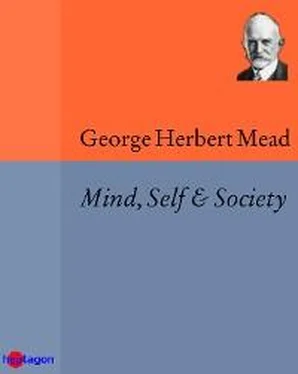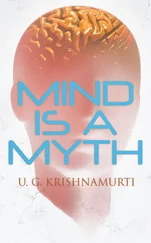Parallelism in psychology was very largely under the control of the study of the central nervous system, and that led on inevitably to functional, motor, voluntaristic, and finally behavioristic psychology. The more one could state of the processes of the individual in terms of the central nervous system, the more one would use the pattern which one found in the central nervous system to interpret conduct. What I am insisting upon is that the patterns which one finds in the central nervous system are patterns of action – not of contemplation, not of appreciation as such, but patterns of action. On the other hand I want to point out that one is able to approach the central nervous system from the psychologist's point of view and set certain problems to the physiologist. How is the physiologist to explain attention? When the physiologist attempts that he is bound to do so in terms of the various paths. If he is going to explain why one path is selected rather than another he must go back to these terms of paths and actions. You cannot set up in the central nervous system a selective principle which can be generally applied throughout; you cannot say there is a specific something in the central nervous system that is related to attention; you cannot say that there is a general power of attention. You have to state it specifically, so that even when you are directing your study of the central nervous system from the point of view of psychology, the type of explanation that you are going to get will have to be in terms of paths which represent action.
Such, in brief, is the history of the appearance of physiological psychology in its parallelistic form, a psychology which had moved to the next stage beyond that of associationalism. Attention is ordinarily stressed in tracing this transition, but the emphasis on attention is one which is derived largely from the study of the organism as such, and it accordingly should be seen in the larger context we have presented.
5. PARALLELISM AND THE AMBIGUITY OF »CONSCIOUSNESS«
»Consciousness« is a very ambiguous term. One often identifies consciousness with a certain something that is there under certain conditions and is not there under other conditions. One approaches this most naturally by assuming that it is something that happens under certain conditions of the organism, something, then, that can be conceived of as running parallel with certain phenomena in the nervous system, but not parallel with others. There seems to be no consciousness that answers to the motor processes as such; the consciousness we have of our action is that which is sensory in type and which answers to the current which comes from the sensory nerves which are affected by the contraction of the muscles. We are not conscious of the actual motor pocesses, but we have a sensory process that runs parallel to it. This is the situation out of which parallelistic psychology arises. It implies on the one side an organism which is a going concern, that seemingly can run without consciousness. A person continues to live when he is under a general anesthetic. Consciousness leaves and consciousness returns, but the organism itself runs on. And the more completely one is able to state the psychological processes in terms of the central nervous system the less important does this consciousness become.
The extreme statement of that sort was given by Hugo Münsterberg. He assumed the organism itself simply ran on, but that answering to certain nervous changes there were conscious states. If one said that he did something, what that amounted to was a consciousness of the movement of the muscles of his body in doing it; the consciousness of the beginning of the act is that which he interpreted as his own volition to act. There is only a consciousness of certain processes that are going on. Parallelism in this extreme form, however, left out of account just such processes as those of attention and the selective character of consciousness. If the physiologist had been able to point out the mechanism of the central nervous system by which we organize our action, there might be still dominant such a statement in terms of this extreme parallelism which would regard the individual as simply conscious of the selection which the organism made. But the process of selection itself is so complex that it becomes almost impossible to state it, especially in such terms. Consciousness as such is peculiarly selective, and the processes of selection, of sensitizing the organ to stimuli, are something very difficult to isolate in the central nervous system. William James points out that the amount of difference which you have to give to a certain stimulus to make it dominant is very slight, and he could conceive of an act of volition which holds on to a certain stimulus, and just gives it a little more emphasis than it otherwise would have. Wundt tried to make parallelism possible by assuming the possibility of certain centers which could perform this selective function. But there was no satisfactory statement of the way in which one could get this interaction between an organism and a consciousness, of the way in which consciousness could act upon a central nervous system. So that we get at this stage of the development of psychology parallelism rather than interactionism.
The parallelistic phase of psychology reveals itself not simply as one of the passing forms which has appeared in psychological investigation, but as one which has served a very evident purpose and met a very evident need.
We do distinguish, in some sense, the experiences that we call conscious from those going on in the world around us. We see a color and give it a certain name. We find that we are mistaken, due to a defect in our vision, and we go back to the spectral colors and analyze it. We say there is something that is independent of our immediate sensory process. We are trying to get hold of that part of experience that can be taken as independent of one's own immediate response. We want to get hold of that so that we can deal with the problem of error. Where no error is involved we do not draw the line. If we discover that a tree seen at a distance is not there when we reach the spot, we have mistaken something else for a tree. Thus, we have to have a field to which we can refer our own experience; and also we require objects which are recognized to be independent of our own vision. We want the mechanism which will make that distinction at any time, and we generalize it in this way. We work out the theory of sense perception in terms of the external stimulus, so that we can get hold of that which can be depended upon in order to distinguish it from that which cannot be depended upon in the same way. Even an object that is actually there can still be so resolved. In the laboratory we can distinguish between the stimulus and the sense experience. The experimenter turns on a certain light and he knows just what that light is. He can tell what takes place in the retina and in the central nervous system, and then he asks what the experiences are. He puts all sorts of elements in the process so that the subject will mistake what it is. He gets on the one side conscious data and on the other side the physical processes that are going on. He carries this analysis only into a field which is of importance for his investigation; and he himself has objects out there which could be analyzed in the same fashion.
We want to be able to distinguish what belongs to our own experience from that which can be stated, as we say, in scientific terms. We are sure of some processes, but we are not sure as to the reaction of people to these processes. We recognize that there are all sorts of differences among individuals. We have to make this distinction, so we have to set up a certain parallelism between things which are there and have a uniform value for everybody, and things which vary with certain individuals. We seem to get a field of consciousness and a field of physical things which are not conscious.
Читать дальше












